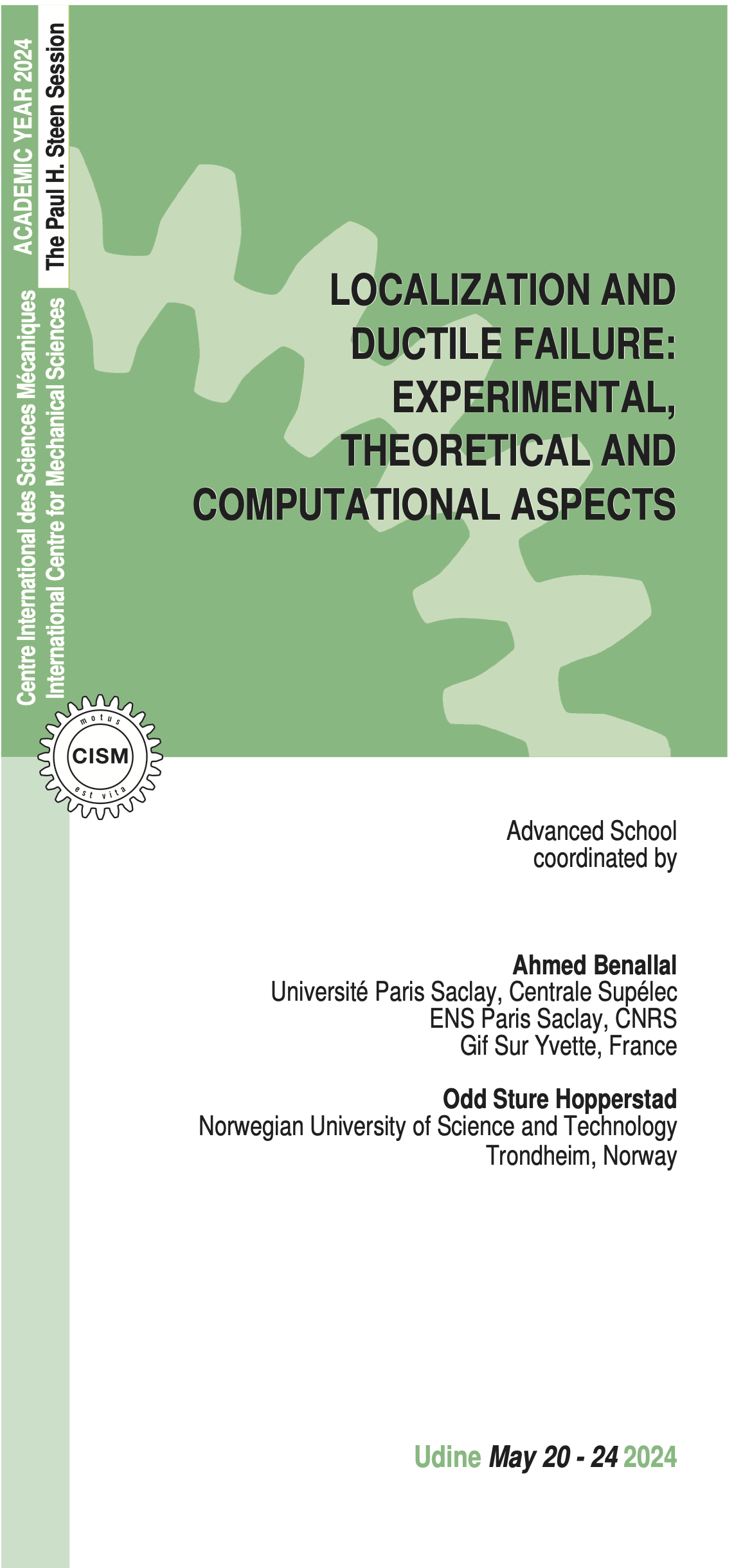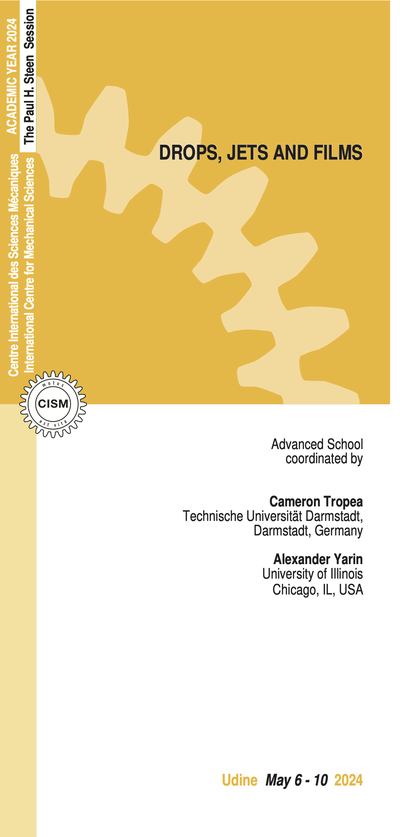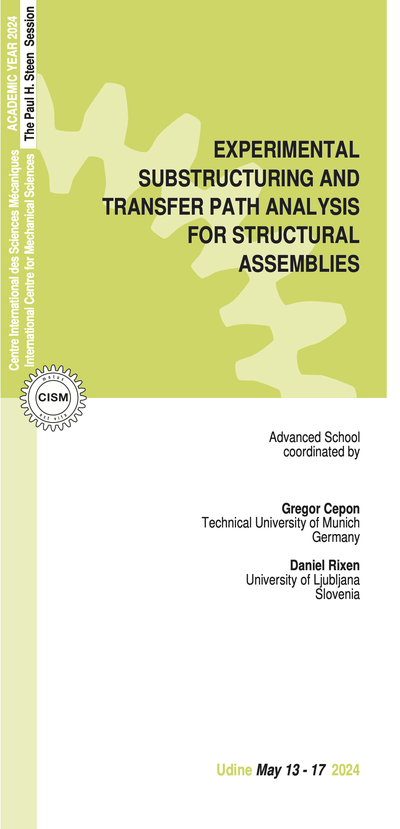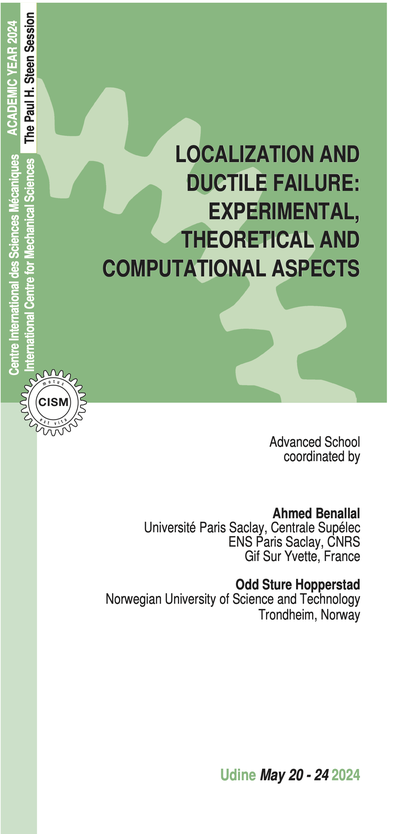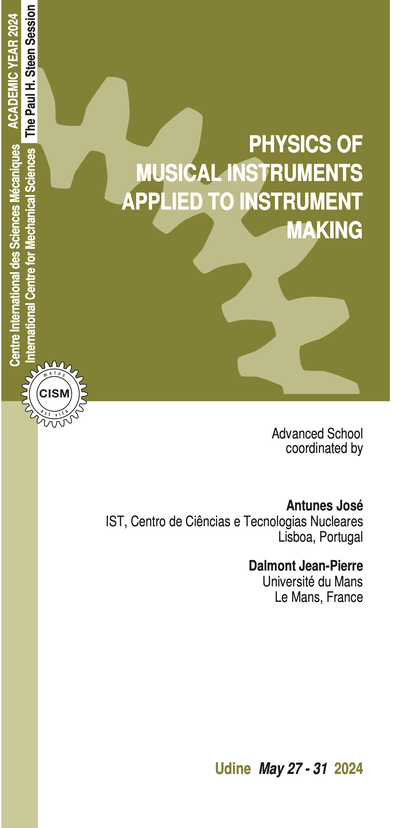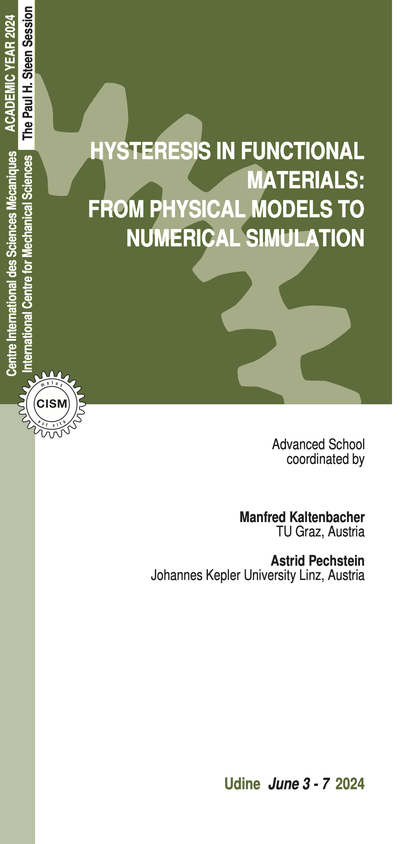Ductile fracture is the most common failure mode in metal alloys. Ductile damage in a metal usually starts at an existing flaw, such as a brittle inclusion within a grain, a precipitate at a grain boundary, or a void. Large plastic deformations lead to the progress of this damage under various stress states and through various physical mechanisms. The objective of the course is to present a complete view and the state-of-the-art of the field. Experimental observations, theoretical modeling, and computational aspects will be considered. We will elucidate the following topics:
1. Phenomenological aspects. The main experimental observations under quasi-static and dynamic loadings on structural metals will be given for different stress states, highlighting the underlying physical mechanisms of ductile fracture. The roles played by the stress state will be highlighted.
2. Approaches to ductile damage. Finite strain plasticity, continuum damage mechanics, and porous plasticity will be presented. To get a deeper insight in the ductile failure process, the course also presents micromechanics-based approaches such as unit cell calculations.
3. Localization phenomena in the ductile failure process. Micro-mechanics will be used to describe the two modes of plastic flow localization that commonly occur in the ductile fracture of structural metals, namely macroscopic localization, and void coalescence. Macroscopic localization is typically associated with the softening effect of void nucleation and growth, in either a normal band or a shear band whose thickness is comparable to the void spacing. Bifurcation and imperfection approaches to strain localization will be described. In the process of void coalescence, which can occur either simultaneously or after macroscopic localization, plastic strain localizes to the ligaments between voids. Experiments have repeatedly reported three distinct types of void coalescence: (i) internal necking, (ii) shear coalescence, and (iii) necklace coalescence.
4. Issues of ill-posedness and length scale aspects in ductile failure. Here, we will explain the theoretical background for the numerical problems usually observed in the simulations and link them to the lack of length scale in the usual local description of the plastic and damage behaviors. This gives some basis for improved modeling of these behaviors including the microstructure of the material.
5. Computational aspects. From the computational point of view, the course will provide the necessary background for the attendees to study and simulate ductile failure with non-linear finite element analyses. The finite element (FE) solver ABAQUS will be used as the main tool both with the explicit and implicit solution methods.
6. Modeling of crack propagation. Finally, all the tools developed above are gathered in the prediction of crack propagation in ductile materials. Crack propagation in ductile metals is truly multiscale, with dislocation activity affecting the micro-mechanics of voids that, in turn, influences the tearing fracture process at the engineering scale.
With these lectures, we aim to attract doctoral students, researchers and engineers interested in ductile failure of structural metals.
The objective is to provide the audience with all the tools necessary to better understand the most recent developments on the subject and so facilitate the technology transfer from research to applications.
E. A. de Souza Neto, D. Perič, D. R. J.Owen, Computational Methods for Plasticity: Theory and Applications, Wiley, 2008.
J. Lemaitre & J.L. Chaboche, Mechanics of Solid materials, Cambridge press, 1985.
C. Tekoğlu, B. Koçhan, 2022. Unit cell calculations under fully characterized stress states. International Journal of Plasticity, 156, 103358. doi: 10.1016/j.ijplas.2022.103358
L. E. B. Dæhli, C. Tekoğlu, D. Morin, T. Børvik, O. S. Hopperstad, 2022. Ductile failure predictions using micromechanically-based computational models. Journal of the Mechanics and Physics of Solids, 164, 104873. doi: 10.1016/j.jmps.2022.104873
C. Tekoğlu, J. W. Hutchinson, T. Pardoen, 2015. On localization and void coalescence as a precursor to ductile fracture. Phil. Trans. R. Soc. A 373: 20140121. doi: 10.1098/rsta.2014.0121
C. Tekoğlu, J.-B. Leblond, T. Pardoen, 2012. A criterion for the onset of void coalescence under combined tension and shear. Journal of the Mechanics and Physics of Solids, 60 (7), 1363-1381. doi: 10.1016/j.jmps.2012.02.006
J.C. Nieto-Fuentes, J. Espinoza, F. Sket, J.A. Rodríguez-Martínez, High-velocity impact fragmentation of additively-manufactured metallic tubes. Journal of the Mechanics and Physics of Solids, 2023, 174, 105248.
J.A. Rodríguez-Martínez, G. Vadillo, J. Fernández-Sáez, A. Molinari, Identification of the critical wavelength responsible for the fragmentation of ductile rings expanding at very high strain rates A. Journal of the Mechanics and Physics of Solids, 2013, 61(6), 1357–1376.
A. Benallal, R. Billardon & G. Geymonat, Some mathematical aspects of the damage softening rate problem, Cracking and damage, 247-258, 1989, 95, 1989.
A gradient-based non-local GTN model: Explicit finite element simulation of ductile damage and fracture, V. Espeseth, D. Morin, T. Børvik, O.S. Hopperstad, Engineering fracture mechanics, 289, 2023.
S. Bergo, D. Morin, O.S. Hopperstad, Numerical implementation of a non-local GTN model for explicit FE simulation of ductile damage and fracture, International Journal of Solids and Structures, 219-220, 2021.
S.Wang, J. Faleskog, 2023. A non-local GTN model with two length scales – Application to ductile failure in a wide range of stress triaxiality. European Journal of Mechanics / A Solids. https://doi.org/10.1016/
6 lectures on: Localization phenomena in solid mechanics. Examples. Conditions for localization. Bifurcation, stability, and imperfection analyses. Roles of constitutive properties on localization. Softening and non-associativity. Ill-posedness in solids mechanics. Conditions for Ill-posedness. Interpretation of ill-posedness conditions. Consequences for better modeling of nonlinear behavior of metals.
6 lectures on: Physical aspects of ductile crack propagation. Multiscale aspects of crack propagation. Nonlocal and gradient theories in solid mechanics. Nonlocal and gradient theories for ductile fracture. Simulation of crack propagation in ductile materials. Calibration and application of a two-length scale model.
6 lectures on: Experimental observations on ductile failure. Physical mechanisms of ductile fracture in structural metallic materials. Finite strain plasticity. Uncoupled and coupled damage models for ductile fracture. Porous plasticity models for ductile fracture. Nonlocal regularization of ductile damage models.
6 lectures on: Computational aspects of plasticity and ductile fracture. User-developments in Fortran for use in finite element solvers. Implicit and explicit implementation of constitutive models. Implementation of uncoupled and coupled damage models for ductile fracture. Development of porous plasticity models for ductile fracture. Numerical aspects of non-local regularization of ductile damage models.
6 lectures on: Dynamic instabilities, plastic shocks, and impact fracture: experimental evidence. Dynamic instabilities: stability analysis, self-similar solutions, and modelling. Dynamic localization. Regularizing effects of rate-dependency, inertia, and microstructure. Microstructurally informed finite element calculations. Illustrations and comparison with experiments.
6 lectures on: Micro-Mechanics of Ductile Fracture: Nucleation, Growth, and Coalescence of Voids Unit Cell Calculations in Ductile Fracture Analysis. Kinematic Constraints and Boundary Conditions. Macroscopic Localization. Mechanisms of Void Coalescence. Illustrations and Applications of Unit Cell Calculations.
ADMISSION AND ACCOMMODATION
The course is offered in a hybrid format, allowing participants the flexibility to attend either in person or remotely via the Microsoft Teams platform.
Limited spots are available for on-site attendance and will be allocated on a first-come, first-served basis.
The registration fees are:
- On-site participation: 600.00 Euro + VAT*
Includes a complimentary bag, five fixed menu buffet lunches, hot beverages, downloadable lecture notes.
Deadline for on-site application is April 20, 2024.
- Live Streaming Online Participation: 250.00 Euro + VAT*
Includes downloadable lecture notes.
Deadline for online application is May 9, 2024.
Application forms should be submitted online through the website: http://www.cism.it.
A confirmation message will be sent to accepted participants.
Upon request, a limited number of on-site participants can be accommodated at CISM Guest House at the price of 35 Euro per person/night (contact: foresteria@cism.it)
* where applicable (bank charges are not included) - Italian VAT is 22%.
CANCELLATION POLICY
Applicants may cancel their registration and receive a full refund by notifying the CISM Secretariat in writing (via email) no later than:
- April 20, 2024 for on-site participants (no refunds after the deadline);
- May 9, 2024 for online participants (no refunds after the deadline).
Cancellation requests received before these deadlines will be subject to a 50.00 Euro handling fee. Incorrect payments are also subject to a 50.00 Euro handling fee.
GRANTS
A limited number of participants from universities and research centres who do not receive support from their own institutions can request a waiver of the registration fee and/or free lodging.
Requests should be sent to the CISM Secretariat by March 20, 2024, along with the applicant's curriculum vitae and a letter of recommendation from the head of the department or a supervisor confirming that the institute cannot provide funding. Preference will be given to applicants from countries that sponsor CISM.
